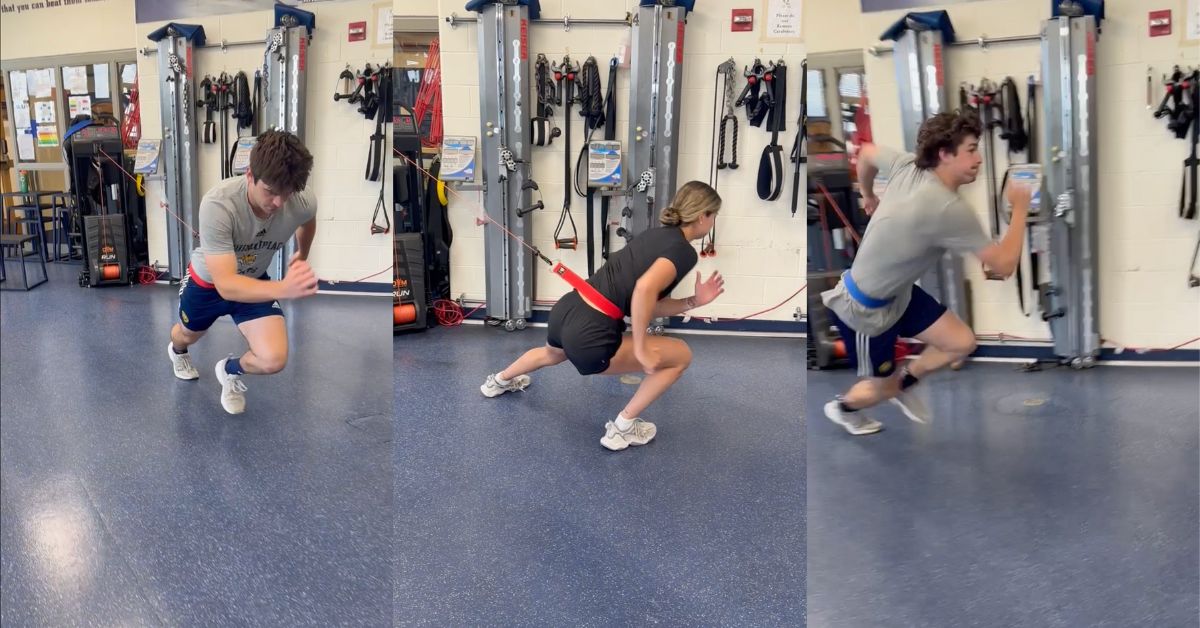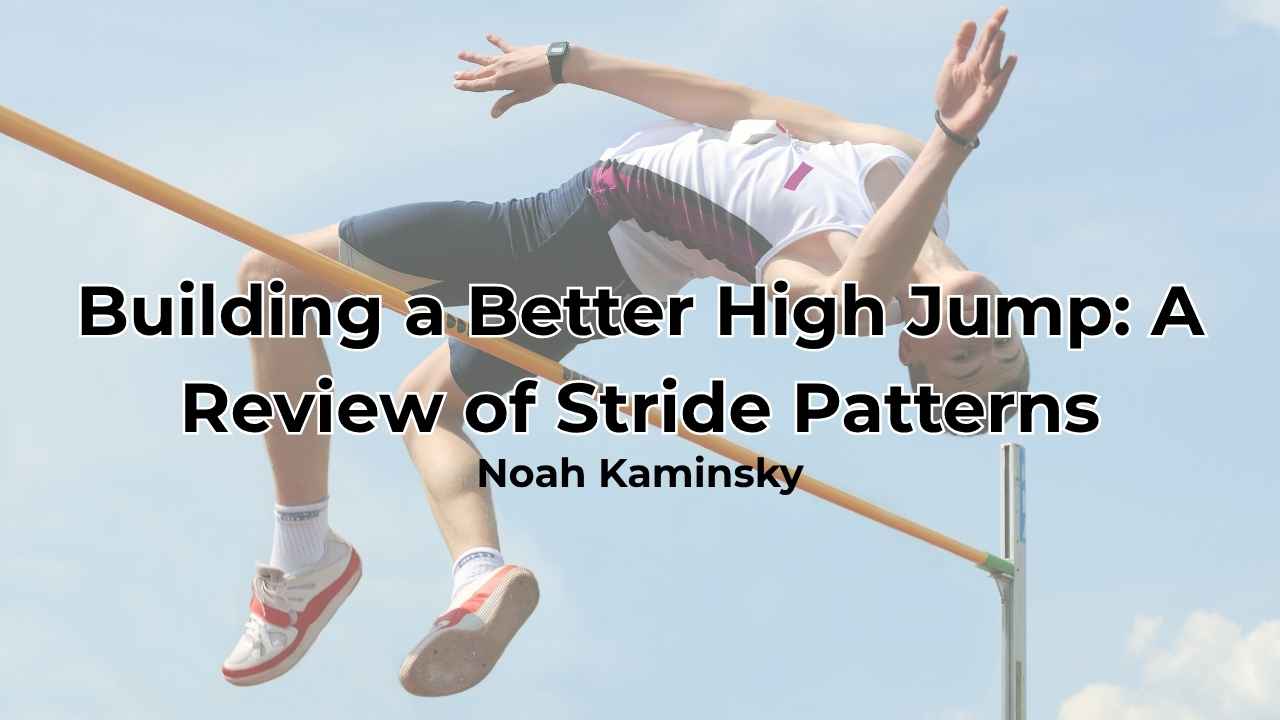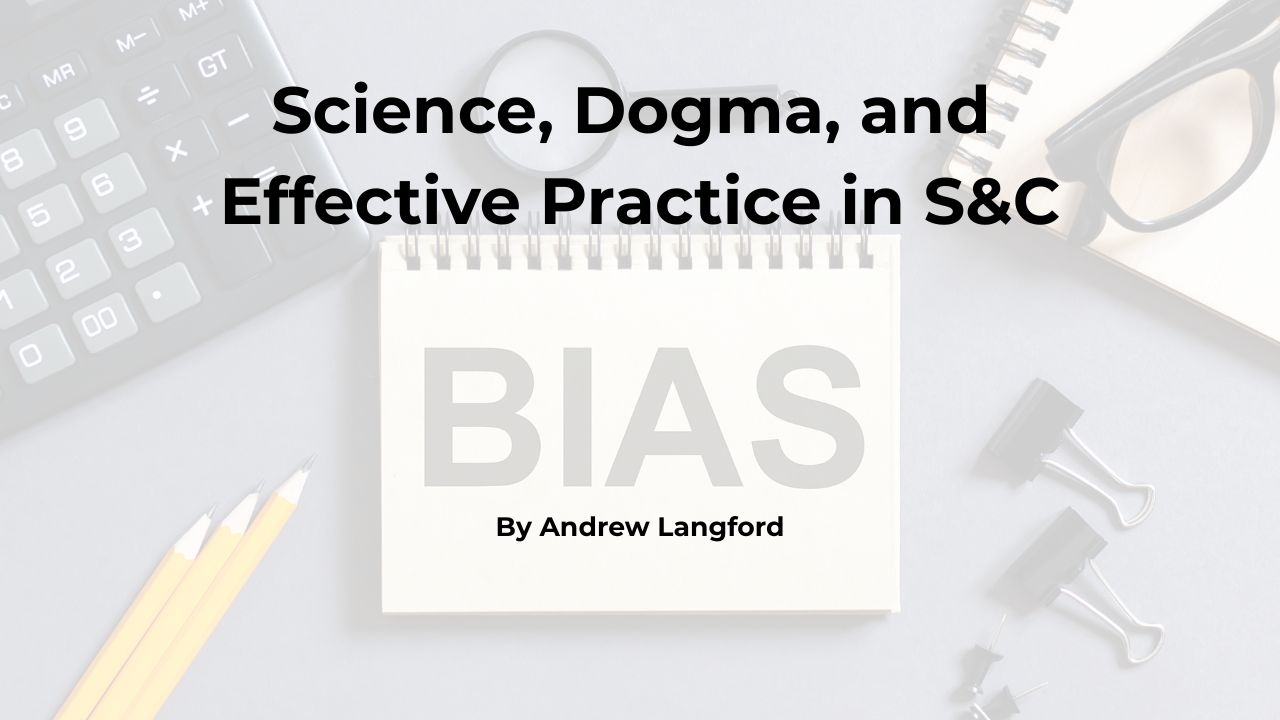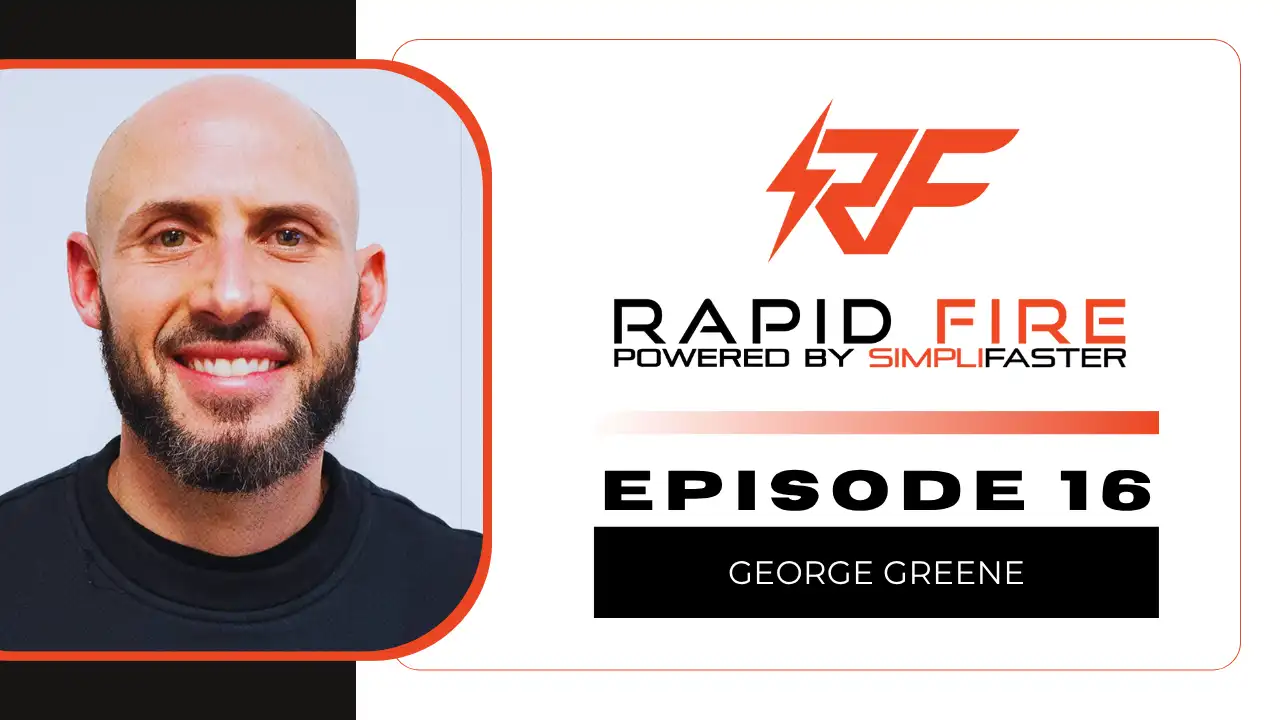Training athletes often comes with its own set of constraints. Things like time, equipment, and space are often constraints to a coach, but they can also be opportunities if they are viewed that way. Time is our biggest asset and often a constraint in the college setting as athletes have other demands that pull on their time. Classes, technical practices, study halls, group meetings, and training are just some things that are asked of them daily. It’s important to take note of how much time a coach has with a group and how much time they can allocate to the segments of training that are planned on a particular day.
The size of a facility and the amount of both accessible equipment and space are vital to consider when designing a training program. I am the Associate Athletic Director of Athletic Performance at Quinnipiac University and have been here for 17 years. I train Men’s and Women’s Hockey and Basketball programs in a 2,200-square-foot facility located in our dual hockey and basketball arena.
Our room is uniquely shaped and not the common square or rectangle as most weight rooms are—the room is, instead, shaped like an oval and creates unique challenges for organization and a floor plan. Over time, we have developed a well-thought-out floor plan that allows athletes to train effectively and efficiently.
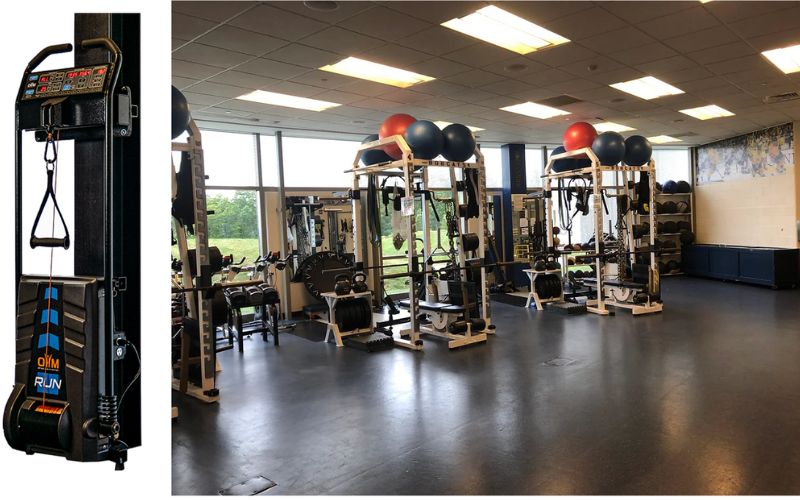
I have also been fortunate to have had access to a unique piece of equipment that I believe is a game-changer for any coach, therapist, or trainer who works with human beings. I have seen this technology reduce athletes’ pain, improve their mobility, improve their power outputs, improve their speed, improve their movement patterns, and help them feel more confident in their movement capabilities.
I have been fortunate to have had access to a unique piece of equipment that I believe is a game-changer for any coach, therapist, or trainer who works with human beings, says @bpatel515. Share on XThe OHM Run is an isokinetic, accommodating resistance machine used to enhance a person’s ability to move more efficiently. Much of my training philosophy is grounded in a movement-based approach to physical preparation and I have not found something that can positively impact a human being’s ability to move more efficiently than the OHM Run.
Fascia
I do not want to go into a full-blown article about the fascial system, how it impacts movement, and how the OHM directly impacts fascia…but I will touch on some key points.
I have an extensive presentation that I have put together about understanding fascia and how we can effectively impact it, which is available for purchase here.
Our role as coaches is to enhance movement, and we use exercise to enhance movement.
Optimal movement requires one’s ability to get into optimal positions to produce and reduce force. Oftentimes, our movement can be restricted and impair our ability to efficiently get into these positions or postures. Our fascial system can be an obstacle to the positions and postures that we desire in our quest for enhancing movement.
Optimal force reduction and production is dependent upon the ability to get into the most biomechanically advantageous positions. Everything that we do in a training environment is used to ultimately enhance an athlete’s ability to move efficiently.
Everything that we do in a training environment is used to ultimately enhance an athlete’s ability to move efficiently, says @bpatel515. Share on XThe OHM’s isokinetic technology impacts fascia as each movement is done at a slow velocity (typically 0.5-1 mph), and increases the time under traction as an individual’s muscles are lengthening and contracting through a full range of motion. The result is similar to if someone was doing fascial manipulation to you, but the individual is moving naturally and working on improving the slide and glide that occurs with muscles against fascia on their own. This actively involves the athlete’s nervous system and improves their ability to feel their movements.
Video 1. This clip shows a common movement that we perform on the OHM to help open up an athlete’s mid-thoracic spine, which allows the tissue to stretch while the force being created is occurring through the feet and transferred through the posterior back line.
The accommodating resistance of the technique allows an athlete to produce maximal amounts of force at a slow velocity, as if a clinician was increasing the magnitude of force during fascial manipulation work. This allows an individual to go beyond the breaking point where fascia would normally not let one go (if there’s a restriction). The tech facilitates a better glide between the deep fascial layer and muscle tissue.
The beauty of this that it is all done by the individual themselves. They learn their movements, they feel their movements, and they are working through their own restrictions.
Implementing OHM Run in a Team Setting
Utilizing the OHM in a team setting is a challenge, since we only have one in our facility. I have typically included it into training on an individual basis and with athletes who wanted to do extra work in small groups or on their own.
This past summer, I wanted to integrate the “warm-up” and “speed/movement” parts of our training session and planned to take advantage of the OHM because I had a feeling that it would help prepare our athletes’ fascial, joint, muscular, and nervous systems for the session ahead.
I had a small group of athletes that I could trial this integrated warm-up with to see how it would work logistically. Before I explain how this worked, I want to share how we have typically organized sessions.
-
- Get Prepared – Soft tissue, RPR, fascial stretches.
-
- Get Right – Ground-based core work.
-
- Get Hot & Get Loose – Continuous, dynamic warm-ups.
-
- Get Ready – Movement prep (linear or lateral)/mechanics.
-
- Get Better – Sprints, plyometrics, strength work, conditioning, etc.
The thought process for this current summer (2024) was to create a way to integrate the OHM into sections three and four to achieve the following goals:
-
- Increase tissue temperature.
-
- Prepare joints and tissue for higher velocity or heavier loading to come later in the session.
-
- Prime the nervous system.
-
- Prepare the body through full range of motion movement.
-
- Improve movement mechanics and pattern them.
The most effective and efficient way to incorporate the OHM into a team session was to set up a circuit where the OHM became a station. Knowing that I wanted to use the OHM, I also decided to implement additional movements with equipment that we would not be able to normally use with a full group. These changes also created novelty within our training, which helped engagement, enhanced communication between team members as they had to help each other flow through the circuit, and reinforce details of each movement (grip, tempo, stance, etc.)
The circuit that we performed on our first lower body day of the week (linear emphasis) was:
-
- A1. OHM Forward March @ 0.5 MPH x2 (5 yds)
-
- A2. Dead Hang x30 sec
-
- A3. Toe Pro Bent Knee Calf Raise x12
-
- A4. BB OH Squat x5
-
- A5. Band Belly Push x15 sec each
- A6. KB 90-90 Pullover x5
Video 2. Forward March at 0.5 mph.
Video 3. Forward facing view of forward march at 0.5 mph.
Once everyone performed those movements, they performed two reps of OHM Sprints at four mph and then six mph for five yards each. The rotations between individuals went quicker due to the shorter nature of each sprint.
Video 4. The Goal here is to create as much force moving at four mph.
Video 5. As velocity increases, take note of the postures that have been attained from the previous, slower-patterned reps.
After this “warm-up” was completed, everyone did the following acceleration work, which we would typically do even if we didn’t implement this change.
- Pushup Starts x 5 yds each leg
- Split Squat Starts x 5 yds each leg
- Ball Drops – stagger start x 5 yds each
- Flying 10’s – x 2
Adding the circuit took the place of our traditional continuous warm-up and allowed me to remove the first couple drills of our linear speed session, which was to pattern pushes and reinforce ground contact under an athlete’s center of mass. Performing the marches and sprints on the OHM allowed the athletes to feel the positions and patterns themselves, which they were then able to incorporate into the following sprint work.
The circuit that we performed on our second lower body day of the week (lateral emphasis) was:
-
- A1. OHM Lateral Push @ 1 mph x1 each (5 yds)
-
- A2. 90-90 Supine Pilates Ring Squeeze x8x2 sec
-
- A3. Toe Pro Bent Knee Calf Raise x12
- A4. 1 Leg KB SLDL x8 each
Video 6. Moving at one mph teaches athletes how to recover their footing under their center of mass.
Video 7. The movements that we prescribed are all movements our athletes have performed in the past.
Once everyone performed one round, they then did lateral shuffles at four and six mph for one rep each direction for five yards.
Video 8. Lateral Push at four mph.
Video 9. Lateral Push at six mph.
The second circuit we performed that day was to work on the crossover pattern:
-
- B1. OHM Crossover Step @ 1mph x1 each (5 yds)
-
- B2. Dead Hang x30 sec
-
- B3. Band Belly Push x15 sec each
- B4. KB Goblet Poliquin Step Down x8 each
Video 10. Crossover Step at one mph.
Video 11. Here is a look at how things are moving around the room and organized.
Video 12. The circuit is set up relatively close to each other to maximize space.
Once the athletes all performed one round, they then did crossover runs at four mph and six mph for one rep each direction covering five yards.
Video 13. Crossover Push at four mph. Our athletes note how they enjoy the ability to lean and create similar angles they would on the ice and push with higher levels of force.
Video 14. Crossover Push at six mph. Take note of foot placement as speed increases.
Just as on day one, these circuits replaced our traditional, continuous warm-up and lateral patterning/movement drills to help our athletes understand how to move laterally more efficiently.
We did not take any objective measurements to see how impactful this change was to our sessions, but the subjective feedback was powerful.
Every single athlete that performed this new circuit said they felt like they could push harder and longer on their sprints and jumps. I attribute this to the isokinetic technology of the OHM, says @bpatel515. Share on XAthletes said they felt, warmer, more engaged, looser, lighter, and more powerful when we moved on to plyometrics and their strength work that followed. Every single athlete that performed this new circuit said they felt like they could push harder and longer on their sprints and jumps. I attribute this to the isokinetic technology of the OHM, because no matter how much force an athlete creates, the speed of the machine limits the velocity they can reach. This means that if an athlete tries to create maximal amounts of force, the OHM increases the resistance so that the athlete will not be able to move faster than the programmed speed. The athlete was forced to learn how to push through their entire range of motion and apply force in the ideal biomechanical position without having to be told or taught what to do.
They were able to feel it themselves.
When an athlete is able to feel it themselves, it enhances their learning and ultimately their self-awareness of their body positions and movements. This experience is invaluable in the athletic development process.
I often tell those that I work with, “If you cannot sense and feel, you cannot control and change.” A responsibility of a coach is to help our athletes develop their own self-awareness; to help them understand and become aware of their thoughts, their breath, their minds, their emotions, and their bodies. Once an athlete learns how to sense and feel those components, they can ultimately control and change them to impact their sense of well-being and performance.
I often tell those that I work with, ‘If you cannot sense and feel, you cannot control and change,’ says @bpatel515. Share on XMoving Forward
Training a full team together often creates many logistical challenges. A coach may have an elaborate, well-thought-out plan that may not be able to work within a session’s given constraints. It’s important for coaches to have secondary plans and protocols that may be able to be used in different situations.
This change in warm-up/movement session is not something that we could use efficiently with a large team (12+ athletes), but provides a nice template if we were to add additional units in the future and when athletes come in to perform extra work in a small group. I will be putting together different “warm-up modules” that integrate movement patterning, strength development, and range of motion—while increasing tissue temperature—that can be performed in a variety of situations to help our athletes continue to improve.
OHM technology is a game changer and is the number one piece of equipment I will look to see how we can incorporate into any new facility, says @bpatel515. Share on XNo matter the environment you work within as a coach, it’s important to have plans that are flexible, adaptable, and modifiable. As new technologies and equipment come to market and we learn how those tools can positively impact movement, it’s important to be flexible in our thought process to understand how we can introduce it for our athletes’ benefit.
OHM technology is a game changer and is the number one piece of equipment I will look to see how we can incorporate into any new facility.
Since you’re here…
…we have a small favor to ask. More people are reading SimpliFaster than ever, and each week we bring you compelling content from coaches, sport scientists, and physiotherapists who are devoted to building better athletes. Please take a moment to share the articles on social media, engage the authors with questions and comments below, and link to articles when appropriate if you have a blog or participate on forums of related topics. — SF

